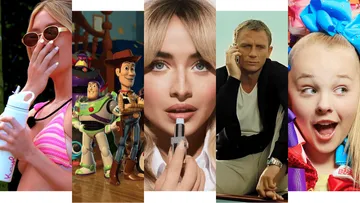Product placement has a varied history, whilst prominently used for decades on TV in some countries, it needs to be clearly labeled, or is just banned, in others. In movies, product placement is commonplace - particularly with some franchises such as James Bond. And many music artists’ videos are often funded by the fees collected from showcasing products in them.
With the proliferation of content across multiple platforms, product placement still has an important role to play in helping fund productions, and create downstream revenue opportunities through licensed products.
Some product placement is obvious and expected - the James Bond franchise have had clear product placement for decades. By associating a product, be it a car, watch, laptop or airline, with the debonair spy meant the brands were desirable by association.
Other movie product placement, whilst also obvious, feels very natural - take the Toy Story franchise for example. Although Disney|Pixar created original protagonists in Woody & Buzz; they included a range of very well known toys to make the film more realistic for kids, and no doubt took a cut of the sales increases. Etch-A-Sketch experienced a whopping 4,000% increase in sales, Mr Potato Head also increased by 800% after the original Toy Story release, prompting Hasbro to alter the product to make it look more similar to the character in the film. And the franchise even put Slinky Dog’s manufacturer, which had ceased trading, back into business after it was inundated with 20,000 new orders. And Mattel’s Barbie and Hasbro’s Green Army Men also likely saw strong sales increases off the back of being included.
Music video product placement has always been very blatant, from Converse and Nirvana’s ‘Smells Like Teen Spirit’ to Beats and Ariana Grande’s ‘Break Free’. The video for the latest release from Sabrina Carpenter, ‘Manchild’, sees her eating a bag of Prada-stamped banana candies. The snack is both an ode to the brand’s iconic banana print introduced in the spring 2011 collection as well as an Easter egg for an unreleased beauty product set to hit the market in the coming weeks. Many brands now partner with musicians in wider deals of which inclusion in their music videos is just one part.
With the proliferation of reality TV, the opportunities to create new products specifically tied to those shows that can be placed in the content as part of the narrative and then sold directly to consumers via branded DTC online stores are huge.
The most obvious and successful example of this is Love Island. First a UK import, and now with local versions as well, the reality show has been incredibly successful. With the entire environment controlled by producers there have been the usual product placements from clothing and beauty products. But more than that the show has created specific branded products for the contestants to use, that are then available to buy on the branded store, advertised during the ad break.
Fans can now buy their own personalized versions of many products they see on the show. From the omnipresent water bottles, to eye masks, opaque glassware (to stop any continuity issues when editing) and even the luggage that has to be packed when the contestants are eliminated from the show.
The next stage of product placement though surely has to be tied to the huge amount of content created by influencers across social media platforms. JoJo Siwa was an early example of this. Known at the time for always having a bow in her hair, she went on, through a number of licensing agreements with the likes of Claire’s Accessories, to sell over 90 million bows.
These days some influencers try to create their own products themselves, but there is still a huge opportunity for manufacturers to partner with influencers to create products that feel authentic to them. These influencers can create huge demand and direct their large fanbases to buy these products, as seen by the number of influencers that have gone on to launch their own brands such as HEY SAHNI by Lisa Doehl, Naturally Pam by Pamela Reif, and Myna Snacks by Pokimane
So although product placement and licensing may seem far apart, they can be very interlinked, and by partnering with the right music artist, influencer or reality TV show there are some great opportunities for growth and incremental revenue.
Check out the great range of musicians, influencers and entertainment shows we have on Negosh and discover opportunities to grow your business.
